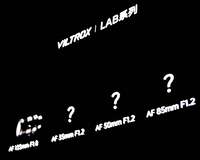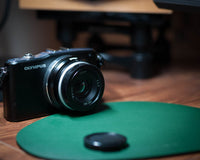As a beginner in the photography community, the first thing you will do is to learn some photography basics instead of purchasing expensive camera equipment immediately as you even have no idea what the camera is and what types of cameras that suit for you. You need to learn some information before making decisions.
SLR/EVIL/ Bridge Cameras
If you are newer in the photographer community and maybe these three phrases make you crazy. What are they? Don’t worry, and I will tell you what they are and you will know how to choose a camera lens kit after understanding these well.
The first one is SLR, which is also named the Single Lens Reflex Camera. Simply, you can interchange lenses based on different needs and situations.

EVIL is Mirrorless Interchangeable Lens Cameras and it is called MILC. It is also SLR, but it is smaller than SLR.

The final one is the Bridge Cameras. Camera, which has A/S/M, is called bridge camera and it is not an interchangeable lens compared to the previous cameras.

A: Aperture Priority (set the aperture, ISO freely and the camera selects an appropriate shutter
S: Shutter Priority (set the shutter, ISO freely and the camera selects an appropriate aperture);
M: Manual Exposure Mode (we can freely set the shutter, ISO and aperture).
ISO
What is the ISO? It refers to a camera sensor’s sensitivity to light. ISO plays a vital role in capturing great images. With the same amount of light, the higher iso is, the more light will be captured by the sensor as well as the brighter image will be taken. But the higher exposure may generate more noise in the pictures. So, it is recommended that you need to use the right ISO. From the photographer’s experiences, it is good for ISO 100 or ISO 200 when starting with it. But you want to change the exposure value after increasing your iso, you can adjust the aperture and shutter or use lens filter.

Focal Length
The focal length is an important part of cameras. Focal length, represented by millimeters, is a distance between the center of lens and camera sensors when the subject is focused. In general, the short focal length offers a wider angle of view or vice versa.

To make you understand well, let’s take the 7artisans 75mm F1.25 camera lens for example. This lens is good for Leica M-Mount Cameras. Look upon the left of the lens barrel, you will see the 75/1.25 and the 75 is its focal length.
The focal length is categorized by different purposes: standard and normal (14mm, 20mm, 24mm, 28mm, and 35mm), a telephoto lens with focal lengths ranging from 50 to 100mm. You can buy them based on your ideas.
Now, let’s look at some pictures with different focal length:
It shows that the longer the focal length, the closer you approach the subject and the wider angle of view.

Aperture
The second thing you need to know is aperture and this part matters. The aperture refers that how much light can pass through the cameras. “F/number” can stand for the aperture. Such as f1.2 You can also check the number on the barrel of the cameras. Like the 7artisans 75mm F1.25 camera lens below the images. F1.25 is this camera lens’s aperture.
The different lens has different aperture values, and two or three lenses have the same aperture value, meaning the same amount of light can enter the camera. Another thing you need to know well is that the larger the aperture value is, the less light the camera gets. Like, f1.2 has a wider opening to allow more light to pass through than f2.4.

Shutter Speed
When it comes to shutter spend, it indicates that the amount of time your shutter is open, exposing light on each frame. It is measured in a fraction of seconds (such as 1/100,1/30). The faster the shutter is, the less light will hit the film or sensor. Interestingly, you can freeze the movement of moving objects like the pic below. In general, we will use 1/100 on a bright day, and on a cloudy day, we use 1/10 and at night, we will use a full second. All shutter speed you can set on your camera depends on your needs and condition.

Depth of Field
Depth of field is the distance between the nearest and the farthest objects that are in acceptably sharp focus in an image. The depth of field is controlled by aperture and focal length. The smaller aperture is (the larger the f-number is), the larger the depth of field is. So, if you want to capture one person, you need to use a larger depth of field, and at the same time it can blur his background. However, if you want to shoot the person as well as his background (such as trees, etc), you need to use a smaller one. You can check out the pics below.

The first pic is the large depth of field, resulting in person in focus and the tree and house is out of focus while the second one is the shallow depth of field, leading to personal and trees in focus.
Wrap-up
Decide to buy cameras is an easy thing and purchasing what kind of cameras is a hard thing. It is hard to buy a camera that can take a decent and beautiful thing. The first thing you need to know some basic information and know what kind of photographer you will and what is your goal to buy a camera (it is for hobby or for being a professional photographer). Once decided, you need to cherish it and love it. Another thing you need to know that the more expensive cameras don’t mean a good camera or good for you. You also need to choose a suitable one.
Remember to figure out your goal and then start your photographer experience. But if you have cameras and you can learn how to capture high-quality and attractive pictures.












